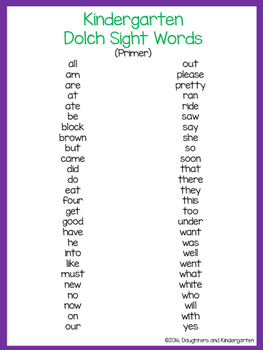


Students having learning disorders like dyslexia, generally struggles in memorizing these words with conventional methods. Practicing to recognize these words helps in building fluency and speed in reading. Red words, collectively, make up more than 50% of the content a young learner may encounter while reading. Instead of stopping to decode these words, students are taught to recognize them immediately “by sight,” Red words are generally called ‘Sight Words’.

For those unaware, ‘Red Words’ are the non-phonetic words, meaning that they don’t follow the usual phonics rules. Other than that, it recognizes learning needs of an individual student as the pace, learning style, topic strength varies student to student.Īn important component of Orton Gillingham approach is the practice of red words.

It also uses multisensory approach to teach reading which involves using visualization, hearing, touch and movement to form connection. Named after reading and language pioneers, Samuel Torrey Orton (1879-1948) and Anna Gillingham (1878-1963), Orton Gillingham approach focuses on teaching connections between letters and sounds. This site will be one of the first sites I go to to find critical learning worksheet material for my students K-3.Orton Gillingham is widely regarded teaching approach designed for struggling readers, such as in case of dyslexia. A devoted teacher to this site from this day forward! I would count it a special favor if this is possible. I have one request, while making packing for the various grade level of my students… I have printed out the coloring name pages can you insert also the months, of the year, and the days of the week worksheets for me. Whom ever the developers for this sight are I salute them from one educator to another. The information is attractive, filled with learning, writing, practice writing, motor skill development (fine, large) coloring, reading, vocabulary and spelling. This sight is a God sent! It is not shallow like so many other sights listed on the web. I am a special education teacher and am ALWAYS surfing the web for interesting, through, in depth, learning sights for my students various domains of learning. I would like to first start off by saying, ‘THIS IS A FANTASTIC SITE”. Our worksheets assist a child in learning to quickly recognize these sight words. Some of these words cannot be “sounded out” using phonetic principles. These are words that are so common that children should learn to quickly recognize them by sight, rather than ‘sounding them out’. Sight words can be tricky for a child who is learning to read. Whereas, Fry categorized his words based on frequency, e.g. Dolch categorized his words based on grades: pre-primer (PP), primer, 1st, 2nd and 3rd grade. In addition, we created worksheets that contain several of Dolch’s preprimer and primer sight words.Īs noted above we indicated if the sight word was included on either Dolch or Fry’s sight word lists. These worksheets focus on more than one word. Based on our kindergarten and first grade reading curriculums, we created additional sight word worksheets.


 0 kommentar(er)
0 kommentar(er)
